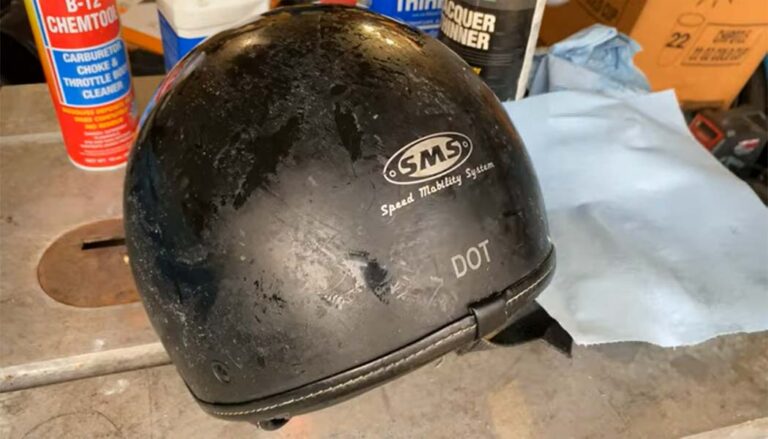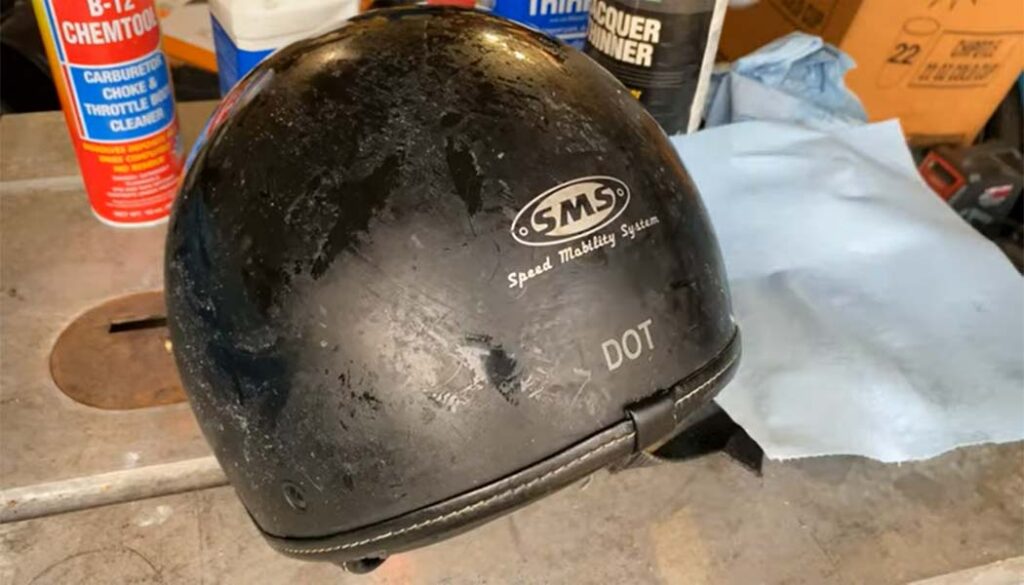
How to Remove Rubberized Paint – A step by step guide
If you’ve ever had the displeasure of dealing with rubberized paint, you know how stubborn and difficult it can be to remove. As a DIY enthusiast myself, I understand the frustration that comes with trying to strip away this coating from your surface. You may have tried scraping, sanding, or using harsh chemicals, but to no avail.
Don’t worry. Through my own experience and research, I’ve compiled some effective methods and tips to help you succeed on how to remove rubberized paint from your surfaces. To remove rubberized paint, you can use a combination of heat and scraping tools to soften and peel away the coating. Alternatively, you can use solvents such as acetone or paint stripper to dissolve the paint. Always wear protective gear and work in a well-ventilated area.

So, let’s dive in and learn how to tackle this challenging task together!
Is Rubberized Paint Removable?
Yes, rubberized paint is removable. However, it can be a challenging task due to its durability and resistance to solvents. The process of removing rubberized paint depends on various factors such as the surface it’s applied on, the age of the paint, and the type of rubberized paint.
One effective method to remove rubberized paint is by using heat and scraping tools. Heat softens the paint, making it easier to scrape away. You can use a heat gun or a hair dryer to heat the paint, but be careful not to overheat the surface or cause any damage. Once the paint is soft, use a scraper or putty knife to peel it away.
Another method is to use solvents such as acetone or paint stripper. Apply the solvent to the painted surface and allow it to penetrate for the recommended time. Then, use a scraper or wire brush to remove the softened paint.
It’s essential to wear protective gear, including gloves, eye protection, and a respirator, when working with rubberized paint and solvents. Work in a well-ventilated area and dispose of any waste properly. If you’re unsure about removing rubberized paint, it’s best to seek the help of a professional.
How to Remove Rubberized Paint?
With a little bit of elbow grease and patience, you can get rid of that unwanted paint and achieve the desired results. Here’s a detailed guide for removing rubberized paint:
Method 1: Using chemicals solvent
Materials:
- Protective gloves
- Goggles
- Mask
- Chemical solvent (such as acetone, mineral spirits, denatured alcohol, or paint thinner)
- Clean cloth
- Stiff-bristled brush or scraper
Step 1: Wearing Protective Gear
Put on protective gloves, goggles, and a mask to avoid skin and eye irritation and inhalation of fumes.
Step 2: Choosing Chemical
Choose a chemical solvent suitable for the type of rubberized paint and the surface it is applied to. Check the manufacturer’s instructions for the recommended solvent.
Step 3: Applying Solvent
Apply the solvent to a small inconspicuous area to test for any adverse reactions or discoloration. Apply the solvent to the rubberized paint with a clean cloth or brush.
Step 4: Loosing the Paint
Let it sit for a few minutes to loosen the paint.
Step 5: Scrubbing
Scrub the paint with a stiff-bristled brush or scraper, working from the edges towards the center of the affected area.
Step 6: Wiping
Wipe the area with a clean cloth and inspect for any remaining paint. Repeat the process as needed until the paint is completely removed.
Step 7: Rinsing
Rinse the area thoroughly with water to remove any residue from the solvent.
Step 8: Drying
Allow the surface to dry completely before applying any new paint or coating.
Method 2: Mechanical Abrasion
Materials:
- Protective gloves
- Goggles
- Mask
- Rotary tool with wire brush attachment or sandpaper
- Scraper
- Clean cloth
Step 1: Wearing Protective Gear
Put on protective gloves, goggles, and a mask to avoid skin and eye irritation and inhalation of dust.
Step 2: Abrasion
Use a rotary tool with a wire brush attachment, sandpaper, or a scraper to remove the rubberized paint.
Step 3: Removing Paint
Apply moderate pressure and work in a circular motion to remove the paint without damaging the underlying surface. Continue working until the paint is completely removed.
Step 4: Wiping
Wipe the area with a clean cloth and inspect for any remaining paint. Repeat the process as needed until the paint is completely removed.
Step 5: Rinsing
Rinse the area thoroughly with water to remove any debris or dust.
Step 6: Drying
Allow the surface to dry completely before applying any new paint or coating.
Method 3: Heat and Scraper
Materials:
- Protective gloves
- Goggles
- Mask
- Heat gun or hairdryer
- Scraper or putty knife
- Clean cloth
Step 1: Wearing Protective Gear
Put on protective gloves, goggles, and a mask to avoid skin and eye irritation and inhalation of fumes.
Step 2: Heating
Use a heat gun or a hairdryer to heat the rubberized paint until it softens and begins to bubble.
Step 3: Scraping
Use a scraper or putty knife to remove the softened paint, working from the edges towards the center of the affected area. Continue working until the paint is completely removed.
Step 4: Wiping
Wipe the area with a clean cloth and inspect for any remaining paint. Repeat the process as needed until the paint is completely removed.
Step 5: Cooling
Allow the surface to cool completely before applying any new paint or coating.
Step 6: Rinsing
Rinse the area thoroughly with water to remove any debris or dust.
Step 7: Drying
Allow the surface to dry completely before applying any new paint or coating.
Note: Always work in a well-ventilated area and follow the manufacturer’s instructions for the chemicals and tools used for removing rubberized paint. If the paint is on a surface that is sensitive.
Check This Video:
How to Remove Rubberized Paint from Clothes?
Removing rubberized paint from clothes can be a tricky task, but with the right materials and steps, it can be done. Hove a look at our effective process for removing rubberized paint from clothes:
Materials:
- Dull knife or spoon
- Clean cloth
- Rubbing alcohol or acetone
- Mild detergent
- Soft-bristled brush (optional)
Step 1:
Scrape off excess rubberized paint using a dull knife or spoon.
Step 2:
Lay the stained area of the garment flat on a clean cloth, with the stain facing down.
Step 3:
Pour some rubbing alcohol or acetone on the stained area, and gently dab the spot with a clean cloth.
Step 4:
If the stain is stubborn, use a soft-bristled brush to scrub the affected area gently.
Step 5:
Once the stain is gone, rinse the garment thoroughly in cold water to remove any remaining paint and cleaning solution.
Step 6:
Wash the garment in the washing machine using a mild detergent in cold water.
Step 7:
Check the garment before drying to ensure that the stain is completely gone. If the stain remains, repeat the process or try using a stain remover.
Step 8:
If the garment is delicate or made of a sensitive fabric, consider taking it to a professional cleaner for removal.
Remember to always test any cleaning solution on an inconspicuous area of the clothing before applying it to the stain to avoid causing further damage.
You Can Also Apply This Trick:
How Do You Remove Old Rubberized Paint?
Here is an easy method to remove old rubberized paint.
Materials:
- Putty knife or scraper
- Paint stripper
- Wire brush or scrub pad
- Protective gloves, goggles, and mask
- Detergent or degreaser
- Water
- Sandpaper (if needed)
- Primer (if needed)
Steps to Follow:
- Use a putty knife or scraper to remove as much of the paint as possible.
- Apply a paint stripper that is appropriate for the surface and type of paint. Be sure to follow the manufacturer’s instructions.
- Allow the paint stripper to sit on the surface for the recommended time.
- Use a wire brush or scrub pad to remove any remaining paint.
- Rinse the surface with water and allow it to dry completely.
- If necessary, sand the surface lightly to smooth out any remaining imperfections.
- Clean the surface with a degreaser or detergent and water to remove any leftover residue.
- Rinse the surface with water and allow it to dry completely.
- If necessary, apply a primer to the surface before repainting or refinishing.
What Chemical Removes Rubberized Paint?
Acetone or rubbing alcohol can be effective in removing rubberized paint from surfaces. These solvents work by breaking down the bond between the paint and the surface, making it easier to remove the paint.
However, it is important to use these chemicals with caution and follow all safety instructions and precautions, including wearing protective gloves, goggles, and a mask. It is also recommended to test the chemical on a small, inconspicuous area of the surface before applying it to the entire area.
Does Paint Thinner Remove Rubberized Paint?
Paint thinner can potentially remove rubberized paint, but it depends on the type of paint thinner and the specific formulation of the rubberized paint.
In general, rubberized paint is designed to be more resistant to solvents, so it may require a stronger solvent or paint remover to effectively remove it. It’s important to test a small inconspicuous area first and follow all safety precautions when using paint thinner or any type of solvent. It may be more effective to use mechanical methods such as sanding or scraping to remove rubberized paint.
Final Thoughts
Removing rubberized paint can be a frustrating and time-consuming task, but with patience and the right tools, it is possible to achieve a successful result. When dealing with stubborn rubberized paint, it’s important to try a few different methods and see what works best for your particular situation.
Personally, I have found that using a combination of a chemical paint stripper and a scraper can be effective, but it requires a lot of elbow grease and can be messy. Alternatively, sanding can be a good option for smaller areas, but it can be difficult to remove all the paint without damaging the underlying surface. The key is to take your time and be careful not to damage the surface you’re working on.
